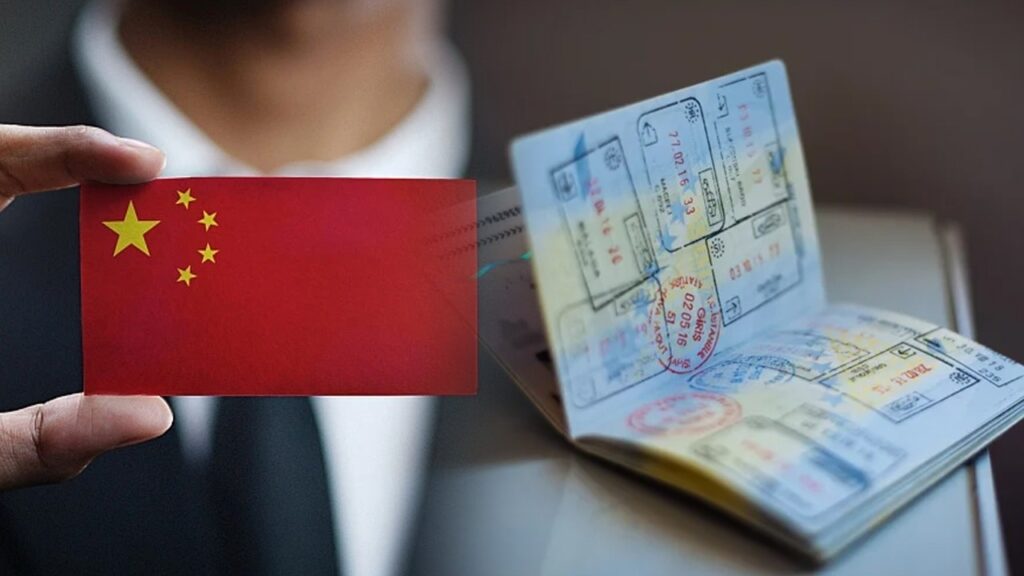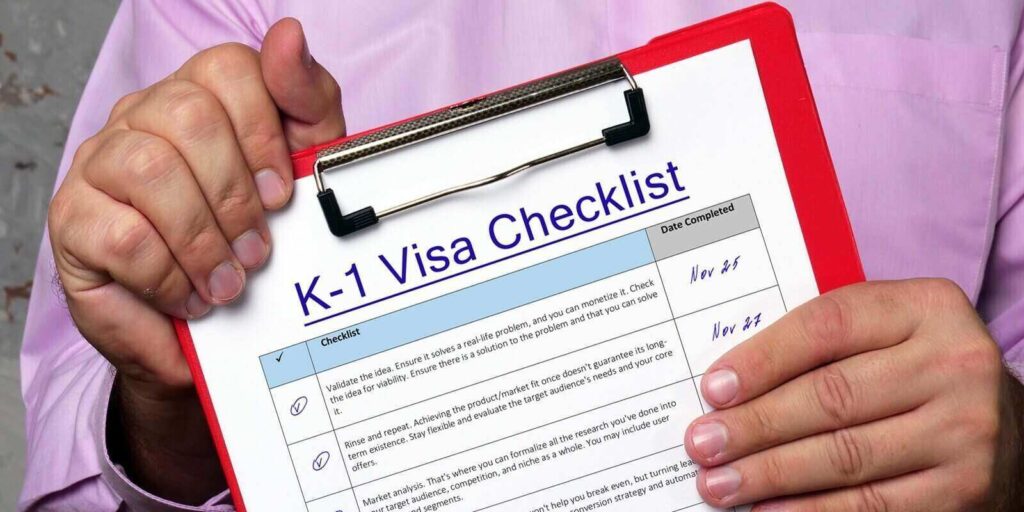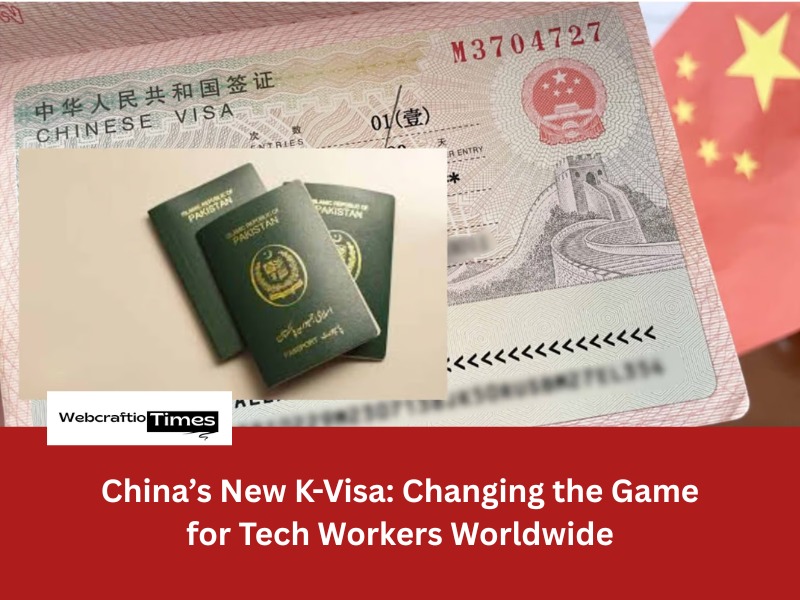Introduction: A New Path for International Talent
In today’s world, countries are competing hard to attract the smartest people, especially in Science, Technology, Engineering, and Mathematics. China, already known for its fast growth in technology and innovation, has taken a big step to bring in this talent.
On October 1st, 2025, China launched a new visa called the K-Visa. This is not just another visa.t is a carefully planned program designed to attract international STEM experts, innovators, and entrepreneurs. With this move, China wants to become a top destination for the next generation of tech leaders.
For anyone with a STEM background—whether you are a fresh graduate or an experienced researcher. The K-Visa offers a unique chance to work, grow, and succeed in one of the world’s fastest-developing economies.
Understanding the K-Visa: Why it is Special ?
The K-Visa is different from traditional work visas, like the Z-Visa, or talent visas, like the R-Visa. What makes it special is that you don’t need an employer to sponsor you right away. This is a big change from the usual visa systems and shows a new way of thinking about immigration.

Key Features and Benefits of the K-Visa:
No Prior Job Offer Required
This is the most interesting feature of the K-Visa. Unlike most work visas around the world, applicants don’t need a job offer from a Chinese company before applying. This gives people the freedom to look for opportunities, build connections, or even start their own businesses after arriving in China. This is will open opportunities to many people around the world who doesnot have a job offer and they wants to build future by going china first and looking for jon there.
Targeted at STEM Professionals
The K-Visa is mainly for people with skills and experience in Science, Technology, Engineering, and Mathematics (STEM). It covers many fields, including artificial intelligence, biotechnology, advanced manufacturing, and renewable energy. This visa is really like a gift from china for these peoples.
Broad Eligibility Criteria:
- Academic Background: Applicants must hold at least a Bachelor’s degree from a recognized university or research institution, whether in China or abroad, within a STEM discipline.
- Professional Experience: Young professionals currently engaged in STEM-related education, research, or industry roles are also eligible, indicating a pathway for those already in their careers.
Read More : Israel Intercepts Global Sumud Flotilla, Detains Hundreds of Activists
Flexibility in Activities
Holders of the K-Visa are not restricted to a single type of activity. They can:
- Study and Teach: Pursue advanced degrees or contribute to academic institutions.
- Conduct Research: Engage in cutting-edge research projects within China’s extensive research and development ecosystem.
- Entrepreneurship and Business: Launch startups, explore business partnerships, or consult, tapping into China’s vast market and innovation hubs.
Enhanced Visa Privileges
The K-Visa is designed to be highly attractive, offering:
- Multiple Entries: Facilitating ease of travel in and out of China.
- Longer Validity Periods: Offering stability and reducing the need for frequent renewals compared to short-term visitor or business visas.
- Extended Duration of Stay: It gives people enough time to settle down, look for opportunities, and build a life.
Why Now? China’s Vision Behind the K-Visa
The launch of the K-Visa is not a random step. It is part of China’s bigger national plan. There are several key reasons behind this important policy change:
Making China More Independent in Technology
In today’s world of rising political tensions and tough tech competition especially with the United States, China is strongly focused on becoming more independent in key technologies. To achieve this, attracting top global STEM talent is essential. This helps China rely less on foreign technology and boost its own innovation at home.
Fueling Economic Growth and Innovation
STEM talent is the engine of modern economic growth. By bringing in skilled professionals, China aims to accelerate its transition to an innovation-driven economy, moving beyond manufacturing towards high-value industries like AI, biotech, quantum computing, and advanced materials.
Countering Global Talent Shifts
Other major economies, including the US, have recently seen shifts in their immigration policies, sometimes perceived as less welcoming to international talent. China’s K-Visa positions itself as an attractive alternative, aiming to capture talent that might otherwise seek opportunities elsewhere.
Strengthening Research and Development
China has significantly increased its R&D spending, establishing numerous world-class research institutions and tech hubs. The K-Visa will provide these institutions with a fresh influx of diverse perspectives and expertise, further enriching China’s scientific output.
Enhancing Soft Power and International Collaboration
By opening its doors more widely to global talent, China can foster deeper international collaboration, build stronger academic and research ties, and enhance its soft power on the global stage.
Who Should Consider the K-Visa? Target Audience and Ideal Candidates

The K-Visa opens doors for a diverse group of individuals who fit the STEM profile. Here are some ideal candidates:
- Recent STEM Graduates: Individuals who have recently completed their Bachelor’s, Master’s, or Ph.D. in STEM fields and are looking for international career opportunities, particularly in dynamic tech ecosystems.
- Early-Career Researchers: Scientists and academics at the beginning of their research careers seeking to work in China’s burgeoning R&D centers, universities, or corporate labs.
- Tech Entrepreneurs: Innovators with startup ideas in STEM-related sectors who see China’s vast market, robust supply chains, and investment capital as fertile ground for their ventures.
- Experienced STEM Professionals: Those looking for a career change, international exposure, or to contribute their expertise to China’s rapidly developing tech industries.
- International Students in China: Existing international students in STEM fields who wish to transition from their student visa to explore career options in China post-graduation without immediate job pressure.
Read More : Pakistan Tests Fatah-4 Missile with 750km Range : Strengthening Defense
Navigating the Application Process: What to Expect
While specific guidelines will be refined, the general application process for the K-Visa is expected to follow a structured approach, prioritizing clarity and efficiency.
- Eligibility Assessment: The first step will involve confirming that your educational background and professional experience align with the STEM criteria defined for the K-Visa.
- Documentation Gathering: This will likely include:
- Valid Passport
- Academic Transcripts and Diplomas (translated and authenticated)
- Proof of STEM-related experience or qualifications (e.g., CV, research papers, professional certifications)
- Personal Statement outlining intentions in China
- Proof of financial solvency (to support oneself during the initial period)
- Health Examination Certificate
- No Criminal Record Certificate
- Passport-sized photographs
- Application Submission: Applications will likely be submitted through Chinese Embassies or Consulates in your home country, or potentially through designated visa application service centers.
- Interview (Potentially): Some applicants might be required to attend an interview to discuss their qualifications and plans.
- Visa Issuance: Upon approval, the K-Visa will be issued, allowing travel to China.
It is crucial for prospective applicants to regularly check the official websites of the Chinese National Immigration Administration and their local Chinese Embassy/Consulate for the most up-to-date and precise application requirements and procedures.
Living and Working in China as a K-Visa Holder

Once in China, K-Visa holders will find themselves in an environment brimming with opportunities, but also one that requires adaptation.
- Vibrant Tech Hubs: Cities like Beijing, Shanghai, Shenzhen, Hangzhou, and Chengdu are rapidly growing tech innovation centers, offering a plethora of networking events, co-working spaces, and industry opportunities.
- Cost of Living: This varies significantly by city. Major metropolises can be expensive, but smaller tier-two cities offer more affordable living without sacrificing access to resources.
- Language and Culture: While English is often used in business and academic circles, learning Mandarin will greatly enhance daily life and professional integration. Cultural nuances are important to understand for effective communication and collaboration.
- Support Networks: Many cities have international communities and expatriate groups that can provide valuable support and networking opportunities.
- Pathways to Residency: While the K-Visa provides initial flexibility, it is anticipated that successful K-Visa holders who secure employment or establish successful businesses may have pathways to transition to more permanent residence permits or even long-term talent visas.
Challenges and Considerations
K visa seems so beneficial and attractive, but people should also be aware of the good and bads:
- Cultural Adjustment: For many people, adjusting to Chinese culture could be challenging.
- Competition: While a visa is easy to access for people so because of this, the competition issue will arise, because many job seekers will enter the job market.
- Policy Evolution: Immigration policies will also be part of this, and looking at them time to time will be essential.
- Digital Environment: China’s digital ecosystem is distinct, with different internet services and platforms compared to many Western countries.
- Finding Mentorship: While opportunities abound, proactively seeking out mentors and building a professional network will be key to long-term success.
Conclusion: A Gateway to Innovation and Opportunity
The introduction of China’s K-Visa is a clear statement of intent: the nation is open for business when it comes to global STEM talent. It represents an unprecedented invitation for scientists, engineers, technologists, and innovators from around the world to contribute to and benefit from China’s technological revolution.
For those in STEM fields seeking new horizons, unparalleled opportunities for professional growth, and the chance to make a significant impact on a global scale, the K-Visa is more than just a document – it’s a gateway to an exciting and transformative future.
As the world continues to globalize and the demand for STEM expertise intensifies, China’s K-Visa is poised to become a pivotal instrument in shaping the next generation of global innovation.
FAQs: China’s New K-Visa (Young Science and Technology Talent Visa)
1. What is the K-Visa and when did it become effective?
The K-Visa is a new category of visa introduced by China to attract young, highly-skilled foreign professionals in STEM (Science, Technology, Engineering, Mathematics) fields. It officially became effective on October 1, 2025.
2. Does the K-Visa require a job offer or employer sponsor?
No. The most significant feature is that the K-Visa does not require a job offer or employer sponsorship for the initial application, giving applicants flexibility to explore work, research, or entrepreneurial opportunities after arriving in China.
3. Who is eligible to apply for the K-Visa?
Applicants are generally required to have at least a Bachelor’s degree in a STEM field from a recognized university or research institution, or be a young professional engaged in relevant education or research work. The target age is broadly considered to be 18 to 45.
4. What activities are permitted under the K-Visa?
K-Visa holders are allowed to engage in a broad range of activities, including educational exchanges, scientific research, cultural collaboration, entrepreneurship, and business activities.
5. What is the main benefit of the K-Visa compared to older Chinese visas?
The main benefit is flexibility . It offers multiple entries, longer validity periods, and extended stays compared to standard visitor or business visas, without being tied down by a single employer’s sponsorship.
For More Updates Follow Us



